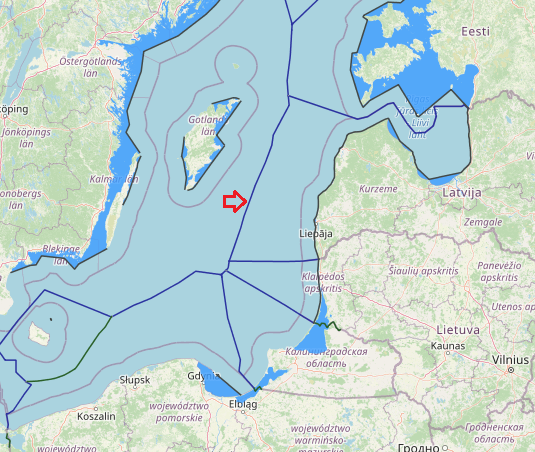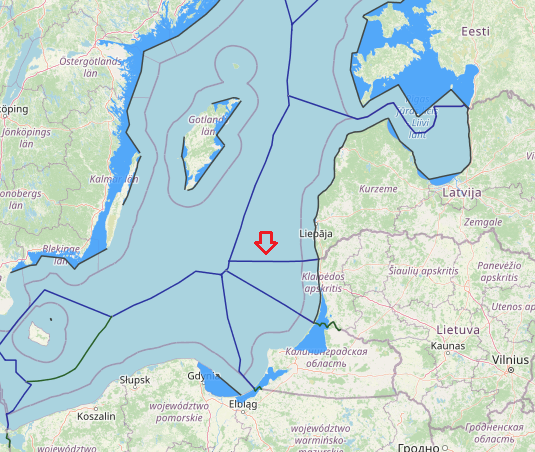On 12 July 1996, Estonia and Latvia also concluded a treaty on the maritime delimitation in Gulf of Riga, the Strait of Irbe and the Baltic Sea. The delimitation line was influenced by the specific geographical configuration of the costs and historical considerations. The existence of a historic boundary between Estonia and Latvia which was established during the 1920’s was also taken into account.
View More maritime boundaries between Latvia and EstoniaTag: Latvia maritime zone
maritime boundaries between Latvia and Sweden
Latvia and Sweden maritime boundaries based on Agreement on the delimitation of the continental shelf and of the Swedish fishery zone and the Soviet economic zone in the Baltic Sea, which it is make the border line by median-equidistance line method. also, agreement between the Government of the Republic of Estonia, the Government of the Republic of Latvia and the Government of the Kingdom of Sweden related to the Common Maritime Boundary Point in the Baltic Sea, 30 April 1997. This agreement entered into force on 20 February 1998.
View More maritime boundaries between Latvia and Swedenmaritime boundaries between Latvia and Lithuania
All of Baltic maritime agreements, except the one between Latvia and Lithuania, have moreover entered into force by now. the Latvia-Lithuania Agreement is first of all an overall maritime boundary agreement, including the territorial sea, exclusive economic zone as well as the continental shelf. Secondly, it added English to the languages of the parties as an authentic text of the agreement. The latter is a rather new development in the Baltic Sea, which started to manifest itself after the dissolution of the former Soviet Union with respect to delimitation agreements directly related to this particular phenomenon. Up to the middle of the 1990s maritime delimitation agreements in this region had always been drafted in the respective languages of the parties only, these texts being equally authentic. Not one single exception to this rule existed. Since the middle of the 1990s this is already the fourth agreement which added English as a supplementary authentic text. What all of them, moreover, have in common is that in case problems of interpretation arise among the different authentic languages, the English language text shall prevail. No difficulty therefore arose when reproducing the English text in Annex 2.
View More maritime boundaries between Latvia and Lithuania


